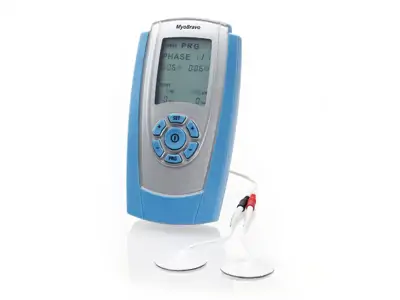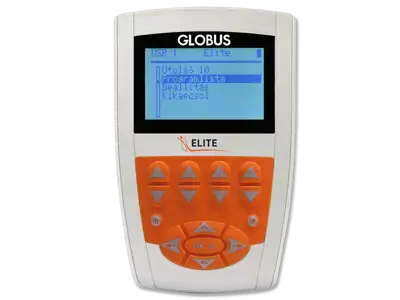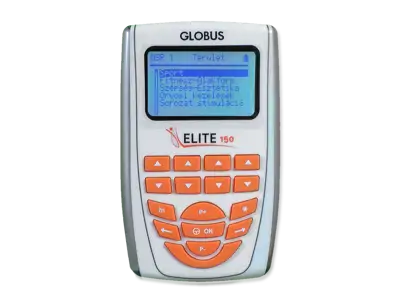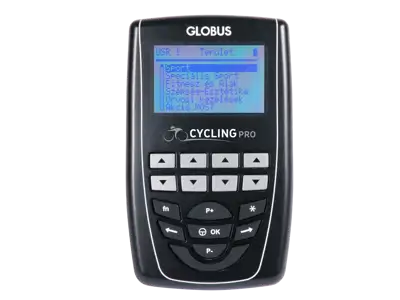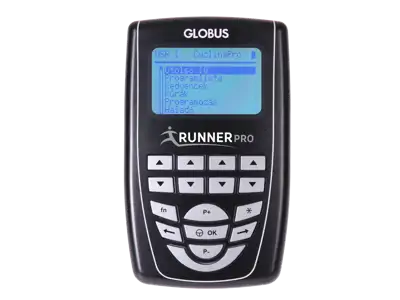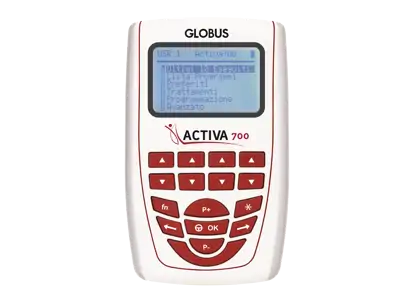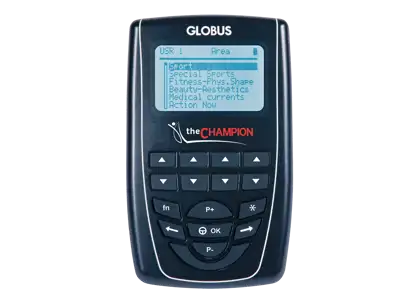Muscle stimulation
Muscle stimulation applications for athletes
Muscle regeneration acceleration
If you haven't used a stimulator before, try muscle regeneration treatments first!
Apply electrodes to the most used muscle after a strenuous workout. A number of studies have shown that muscle stimulation is more effective than any other method of recovery in reducing metabolites and thus muscle fatigue and stiffness.
Stimulation of the muscle within 90 minutes of exercise increases blood flow by up to 300%, speeding up the pumping and flushing of waste products from the muscle. The majority of metabolites are broken down in the liver, so the sooner they get there, the sooner muscle stiffness and fatigue are resolved. Shorter recovery time, prevents muscle cramps.
The acceleration of circulation is beneficial not only in terms of transport, but also in replenishing muscle stores.
A properly treated muscle after exercise is significantly fresher and more relaxed for the next workout, allowing for more efficient loading.
Muscle Injury Treatment
Muscle stimulation was originally a medical, hospital treatment that was first used to repair muscle injuries. In the case of a sports injury, it is important for you to return to training as soon as possible.
Muscle stimulation does not move the joint, so you can start muscle strengthening treatments the day after any tendon, ligament, joint capsule or cartilage injury!
After a muscle injury, you need to wait a few days for the bleeding to stop. But you can apply it 3-4 days after the injury. It increases blood and lymphatic circulation, which brings the nutrients needed for healing to the site of the injury. This speeds up the recovery of muscle fibres.
Muscle recovery
After a fracture, cartilage surgery, ligament surgery, etc., you are condemned to prolonged bed rest. The longer the forced rest, the more you lose the muscle strength and muscle mass gained through strenuous exercise. After two to three weeks of rest, roughly half a year's worth of training will be wiped out.
Since stimulation does not move the joints, you can start muscle-preserving or muscle-strength-recovery exercises a few days after surgery. By the time your joints are allowed to move, your muscles are ready to do so. That means you can bring your recovery forward by weeks!
Rehabilitation can be further accelerated by combining physiotherapy movements and stimulation. Stimulation can be performed simultaneously with voluntary movement, which helps to "retrain" neuromuscular function.
"lagging" muscle development
Some people find that, despite training a particular muscle in the traditional way, it refuses to develop. With electrical muscle stimulation, however, you can "target" a single muscle, and you can even decide which muscle you want to "tweak". In isolation, you can 'fine-tune' endurance, aerobic tolerance, increase muscle strength and explosiveness or even increase muscle mass. Attention! The effect only occurs on the muscles treated!
Training time "gain"
Most athletes do not have enough training time to exercise while having a family, working or studying. Those whose jobs are office-based and stationary can "gain" workout time with muscle stimulation. Passive muscle stimulation while sitting also gives the muscle an extra workout! It's just like training one more!
Obviously, you should only treat the muscles that are most important for your sport. For a runner or cyclist it's the thigh muscles, for a swimmer it's the wide back muscles that provide thrust, etc.
You can target the treatment, if you're a sprinter you need to increase muscle strength and explosiveness. For long-distance sports, muscle endurance and aerobic-anaerobic tolerance are crucial, so you need to adjust the impulse accordingly.
Avoid recurrence
Imagine a situation: you squat with a barbell during a strength training session and the next day your knee is signalling pain. You think, "Yeah... it's from yesterday. Never mind, I'll push". You do the prescribed. The next day, however, the pain is still there, and now it even seems to sting. But again, you exercise. So it goes on for two or three weeks before you realise it's an overuse injury that needs to be "rested". The inflammation isn't going to go away if you put any weight on it. Yes, it does, but if you miss 2-3 weeks, you've put in the last 3-4 months of hard work and you can't get back into it this season.
This is when the muscle stimulator comes in. As long as you're resting the joint (i.e. not doing any traditional movement that puts stress on your knee), you can maintain the condition of your leg muscles with stimulation!!!! In other words: even though you don't run or cycle for 2 weeks, your hamstrings still don't contract! Once your knee has recovered and you're training again, you can practically pick up where you left off.
Another similar area is of interest only to high-level athletes. For someone who trains for a race twice a day, travelling to a distant race is a serious problem. During a 30+ hour flight, muscles stiffen up and at that level, even a two day layoff "shows". In such cases, a muscle stimulator is an invaluable asset. It fits in your pocket, you can use it on the plane and it will keep your most important muscles fully maintained. When you arrive at your destination, there will be no sign of muscle fatigue.
